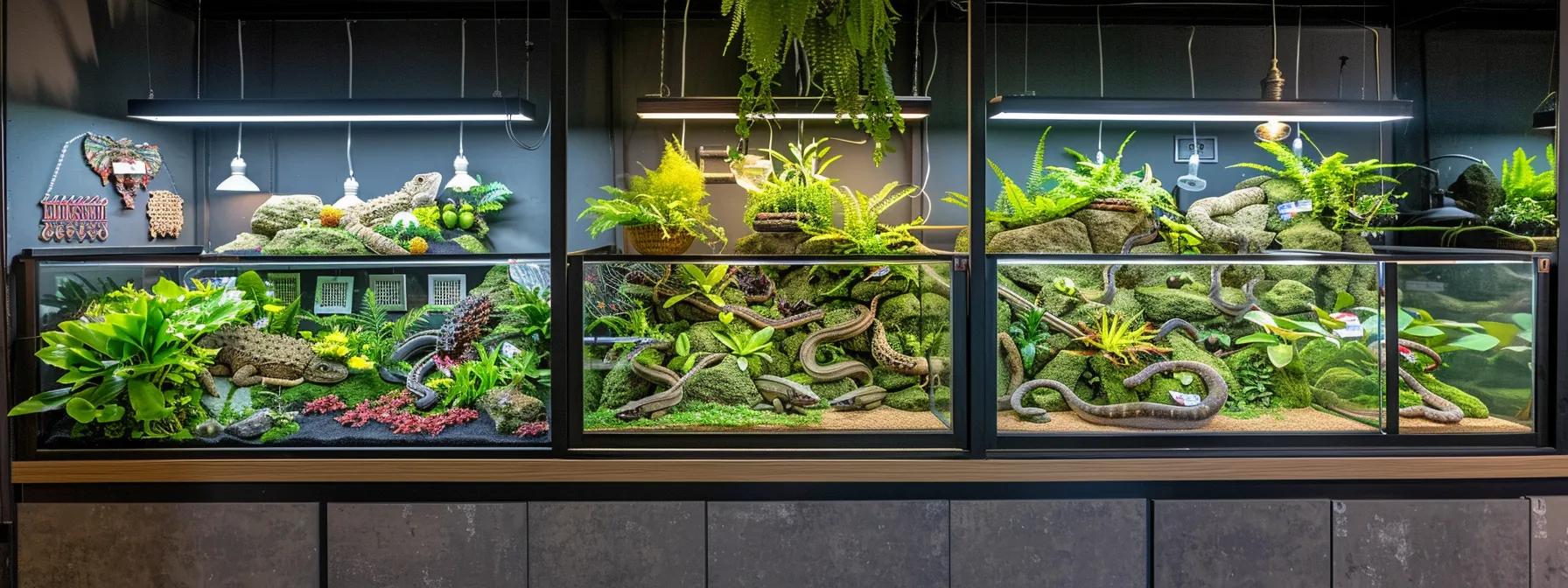
Best UVB Lighting Options for Healthy Reptiles
Reptile enthusiasts and herpetoculturists understand that proper lighting is vital for reptile health. UVB lighting is not merely aesthetic; it plays a significant role in overall well‐being by enabling vitamin D3 synthesis, which in turn assists in calcium absorption. When reptiles bask under appropriate UVB lighting, they can maintain optimal health, reduce the risk of metabolic bone disease (MBD), and support proper thermoregulation. This article explains the scientific basis for UVB lighting, outlines the types of bulbs available, and discusses setup, maintenance, and troubleshooting issues—factors that ultimately influence the health and longevity of your reptile.
Inadequate or improper UVB lighting can lead to severe health complications. UVB deficiency may result in lethargy, reduced appetite, impaired shedding, and metabolic bone disease—a condition marked by calcium deficiency and weakened skeletal structure. Providing a balanced habitat that mimics natural sunlight is essential. Recent advances in LED UVB lamps, halide, and mercury vapor bulbs have given reptile keepers reliable, durable, and energy-efficient choices. This article is structured around key questions regarding UVB lighting, including its biological function, bulb types, species-specific recommendations, maintenance tips, and troubleshooting.
Transitioning from the importance of UVB, the following sections explore its role in vitamin D3 synthesis, deficiency implications, and behavioral effects on reptiles. Addressing these questions helps herpetoculturists make informed decisions that foster healthier reptile environments.
What Is UVB Lighting and Why Is It Essential for Reptile Health?
UVB lighting is a specialized form of ultraviolet light that emits the wavelengths necessary for reptile skin to produce vitamin D3. In the wild, reptiles receive this exposure from sunlight; in captivity, artificial sources must mimic these conditions. UVB not only stimulates vitamin D3 production—which is crucial for calcium absorption and bone strength—but also supports thermoregulation, as reptiles adjust their body temperature through behaviors like basking.
Modern UVB bulbs are engineered to emit a specific amount of ultraviolet radiation, often measured by the ultraviolet index (UVI), closely replicating natural sunlight. Regular exposure to UVB enables reptiles to maintain a balanced metabolism, strong skeletal structures, and natural behaviors. Without proper UVB lighting, reptiles risk developing conditions such as rickets and metabolic bone disease.
How Does UVB Light Support Vitamin D3 Synthesis in Reptiles?
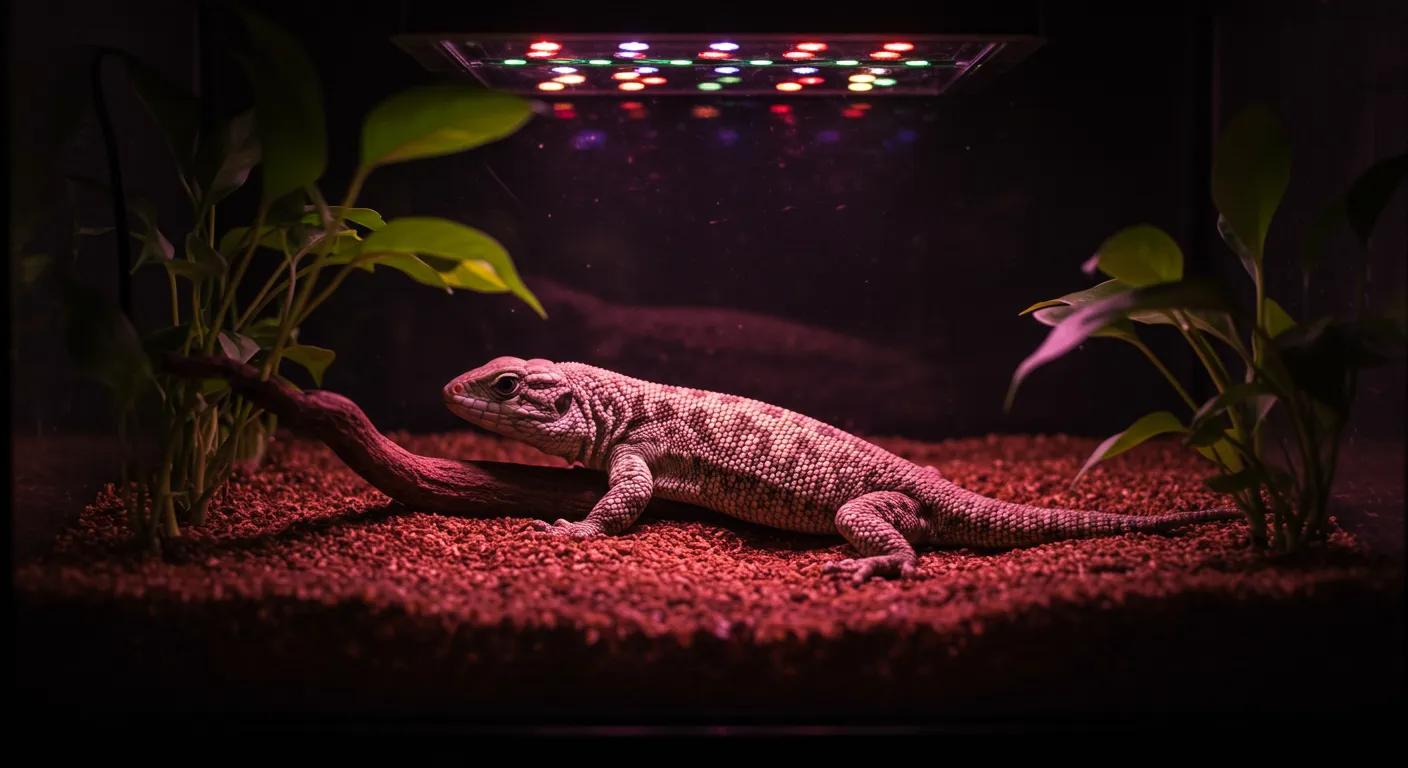
UVB light initiates a photochemical reaction in the skin, converting 7-dehydrocholesterol into previtamin D3. This substance subsequently isomerizes into vitamin D3, which is then metabolized in the liver and kidneys into its active form. Active vitamin D3 is essential for enhancing calcium absorption in the intestines, thereby maintaining skeletal health.
The efficiency of this process depends on the light’s spectrum and intensity; inadequate or low-quality UVB sources can lead to compromised calcium metabolism. Captive reptiles, deprived of direct sunlight, rely on artificial UVB lighting to sustain their health. Beyond skeletal benefits, UVB exposure may also boost immune function, stabilize mood, and enhance natural behaviors.
What Are the Risks of UVB Deficiency and Metabolic Bone Disease (MBD)?
Insufficient UVB lighting can lead to metabolic bone disease (MBD), which occurs when reptiles are unable to produce enough vitamin D3 to absorb calcium effectively. Young reptiles are especially vulnerable during rapid growth phases. Key symptoms of MBD include:
- Soft, deformed, or brittle bones
- Lethargy and reduced movement
- Drooping limbs and joint swelling
Without proper UVB exposure, reptiles may also experience compromised organ function and increased susceptibility to infections. Regular UVB exposure helps ensure robust bone density and overall vitality, while preventive measures—such as timely bulb replacement and proper installation—reduce the risk of these complications.
How Does UVB Influence Reptile Behavior Like Basking and Thermoregulation?
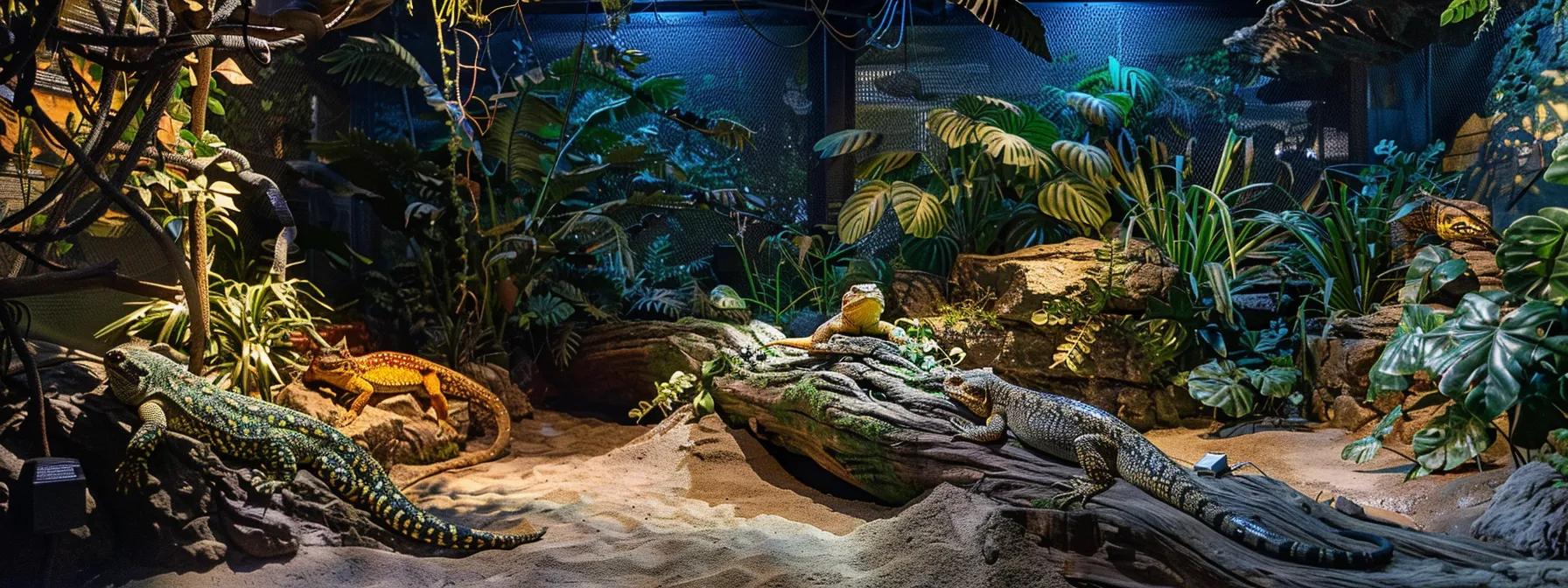
Reptiles are ectothermic; they depend on external heat to regulate their body temperature. UVB lighting plays a dual role by:
• Facilitating vitamin D3 synthesis • Stimulating natural basking behavior
When exposed to UVB, reptiles instinctively move into the light and take up basking postures. This behavior not only helps with thermoregulation but also ensures that they maintain an appropriate temperature gradient within their habitat. Without a proper UVB gradient, reptiles may either overheat or fail to reach their optimal body temperature, negatively affecting digestion, metabolism, and overall activity levels.
Studies have shown that well-designed lighting setups encourage natural behaviors, leading to improved activity, better feeding, and overall enhanced well-being.
Which Types of UVB Bulbs Are Best for Reptiles?
Reptile lighting options generally fall into three categories:
• T5 Fluorescent Bulbs – Offer high UVB output with low heat emission – Provide a balanced spectrum that supports vitamin D3 synthesis – Ideal for diurnal lizards in small to mid-sized enclosures
• Mercury Vapor Bulbs – Combine substantial amounts of UVB and heat – Suitable for larger enclosures and reptiles requiring higher ambient heat – Cover broader areas with a mix of light and thermal energy
• LED UVB Lamps – Represent the latest innovation – Provide energy efficiency, customizable spectrums, and longevity – Ideal for species-specific or precision setups
Each bulb type is measured by its ultraviolet index (UVI) output, ensuring that the light meets the reptile’s nutritional and metabolic needs. Factors such as maintenance schedules, initial cost, and energy efficiency influence bulb selection. Many reptile keepers now opt for LED systems due to their longevity and adjustable output.
What Are the Differences Between T5, Mercury Vapor, and LED UVB Bulbs?
- T5 Fluorescent Bulbs: • High UVB output with minimal heat; ideal for smaller to mid-sized setups. • Generally have a simpler maintenance schedule and lower upfront cost.
- Mercury Vapor Bulbs: • Produce both UVB and significant heat, covering larger areas. • Best for enclosures needing both intense basking zones and ambient heat.
- LED UVB Lamps: • Offer fully customizable spectrums and nearly constant output. • Superior energy efficiency and longer lifespan, though initial costs are higher.
Each type’s usage depends on factors such as enclosure size, species requirements, and budget considerations.
How Do UVB Output Levels and UVI Affect Bulb Selection?
UVB output is quantified by the ultraviolet index (UVI). A higher UVI can lead to increased vitamin D3 synthesis, but must be balanced to avoid overexposure and skin damage. Different reptile species require varying UVI levels; for example, diurnal lizards need higher values than nocturnal or forest-dwelling species. It is crucial to measure the UVI at the basking spot, ensuring that conditions match the reptile’s natural habitat. Regular monitoring and recalibration help maintain effective UVB levels.
What Are the Top UVB Bulb Brands and Their Features?
Well-known brands include Zoo Med, Exo Terra, Arcadia, and ReptiSun. Their products are backed by rigorous testing and are known for:
• Consistent UVB output • Durable construction and long bulb lifespan • Energy efficiency and safety (e.g., controlled mercury content)
Selecting a reputable brand assures reliable performance and support, which is critical for long-term reptile health.
How to Choose the Right UVB Lighting for Different Reptile Species?
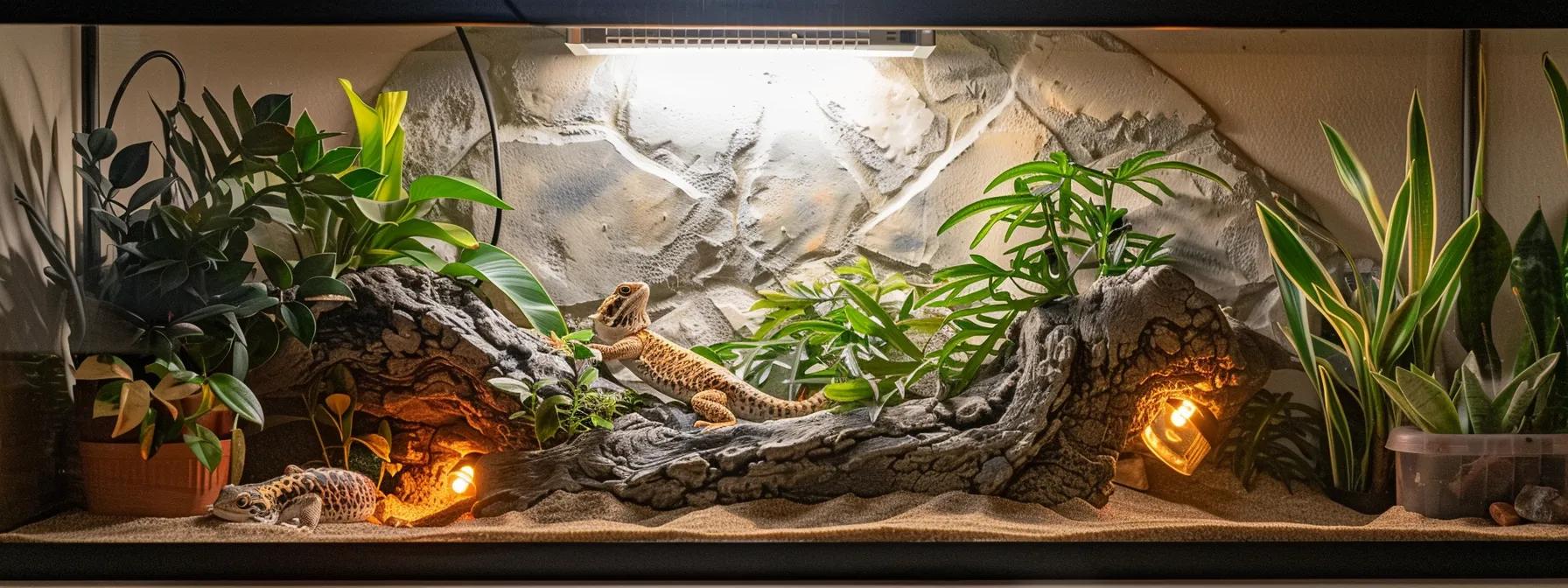
Different reptile species have unique UVB requirements based on their natural environment.
- Desert Dwellers (e.g., bearded dragons): • Require high-intensity UVB (UVI between 3 and 7) • Need close, concentrated light sources such as high-intensity T5 bulbs
- Forest or Shaded Species (e.g., leopard geckos): • Require lower UVB intensity to prevent overexposure • Suitable for low-UVI bulbs or setups with increased distance between the bulb and the reptile
Factors to consider include the type of bulb, distance to the basking area, and daily exposure duration. Consulting species-specific care sheets or studies can help determine the ideal UVI range.
What UVB Lighting Is Recommended for Bearded Dragons?
Bearded dragons thrive under robust, high-intensity UVB lighting. The recommended UVI range is between 3 and 7, typically delivered by high-intensity T5 fluorescent bulbs. Bulbs should be installed 12 to 18 inches above the basking platform. A stable photoperiod of 10-12 hours of light daily supports natural behaviors such as foraging and thermoregulation. Complementary heat sources should be used to mimic the outdoor environment. Regular UV meter checks and timely bulb replacements are essential for optimal health.
How to Select UVB Bulbs for Leopard Geckos and Corn Snakes?
Leopard geckos and Corn snakes, native to shadier or indirect light environments, require lower intensity UVB setups. Low-UVI bulbs—provided by T5 or compact fluorescent lamps with reduced wattage—are ideal. For Corn snakes, combining moderate UVB with a heat lamp ensures a balanced thermal gradient. Positioning the bulb farther from the basking area creates a diffused light effect, and using timers to mimic natural day-night cycles helps prevent overexposure.
What Are UVB Requirements for Aquatic Reptiles Like Turtles?
Aquatic reptiles like turtles need a multi-faceted lighting setup. UVB bulbs (mercury vapor or T5) should be mounted above the basking platform with a UVI range between 3 and 5. This allows turtles to receive intermittent UVB stimulation when they emerge from the water. A proper heating element is essential to maintain the required thermal gradient. Enclosures should blend dry basking zones with moist areas to simulate natural conditions.
How Does Enclosure Size and Setup Affect UVB Lighting Choices?
The enclosure’s size, design, and materials significantly affect UVB lighting effectiveness. In larger spaces, multiple bulbs or bulbs with higher output may be necessary to ensure even UVB distribution. Factors such as glass type, reflective surfaces, and substrate can enhance or block UVB penetration. Designers should minimize obstructions and strategically place bulbs to create defined basking zones. Regular monitoring with a UV meter ensures that environmental factors or bulb degradation do not undermine the setup.
How to Properly Set Up and Maintain UVB Lighting for Reptiles?
Effective UVB lighting setup and maintenance require careful planning and regular monitoring. Key steps include:
• Optimal Placement: – Position bulbs so that they cover the entire basking zone. – Follow manufacturer guidelines regarding distance (typically 12 to 24 inches for T5 bulbs).
• Timed Operation: – Use timers to replicate a natural day–night cycle (10-12 hours on). – This consistent photoperiod aids in vitamin D3 synthesis and natural behavior.
• Maintenance: – Regularly test UVI levels with a UV meter. – Clean fixtures to remove dust and debris. – Replace bulbs every 6–12 months as recommended to prevent output degradation.
Following these practices ensures that reptiles receive a continuous and reliable source of UVB, replicating natural sunlight conditions.
What Is the Ideal UVB Bulb Placement and Distance in Terrariums?
For terrariums, bulbs should be mounted directly above the basking area. For T5 fluorescent tubes, a distance of 12 to 18 inches is common; mercury vapor bulbs may need up to 24 inches to balance heat and UV exposure. The goal is to ensure that the measured UVI at the basking spot lies within an optimal range, without creating hot spots or shadows. Using a UV meter to verify placement and checking for physical obstructions are key steps.
How Long Should UVB Lights Be on Each Day for Reptiles?
A consistent light cycle of 10 to 12 hours per day is recommended to simulate natural conditions. This duration supports vitamin D3 synthesis, proper feeding behavior, and thermoregulation. Programmable timers help maintain this schedule, and periodic adjustments may be necessary based on seasonal changes or observed reptile behavior.
When and How Often Should You Replace UVB Bulbs?
UVB bulb output declines over time, even when visible light seems normal. Most manufacturers advise replacing bulbs every 6 to 12 months to ensure consistent UVB levels. Regular UVI measurements can confirm when replacement is needed, even before the bulb appears to have burned out. A proactive replacement schedule is critical to prevent health issues like MBD.
What Are Common Mistakes to Avoid in UVB Lighting Setup?
Common pitfalls include:
• Improper Bulb Placement: – Too distant or too close, leading to low UVI or overheating.
• Incompatible Enclosure Materials: – Materials like some glass or acrylic may block UVB.
• Neglecting Bulb Replacement: – Failing to replace bulbs on schedule leads to decreased UVB output.
• Overexposure/Underexposure: – Imbalanced cycles can disrupt circadian rhythms and thermoregulation.
• Lack of Regular Monitoring: – Not using a UV meter to check output can leave issues undetected.
• Poor Enclosure Design: – Ineffective layouts cause uneven light distribution.
• Ignoring Combined Heat Needs: – Relying solely on UVB bulbs without additional heat sources may disrupt the thermal gradient.
What Are the Signs of UVB Deficiency and How to Prevent Health Issues?
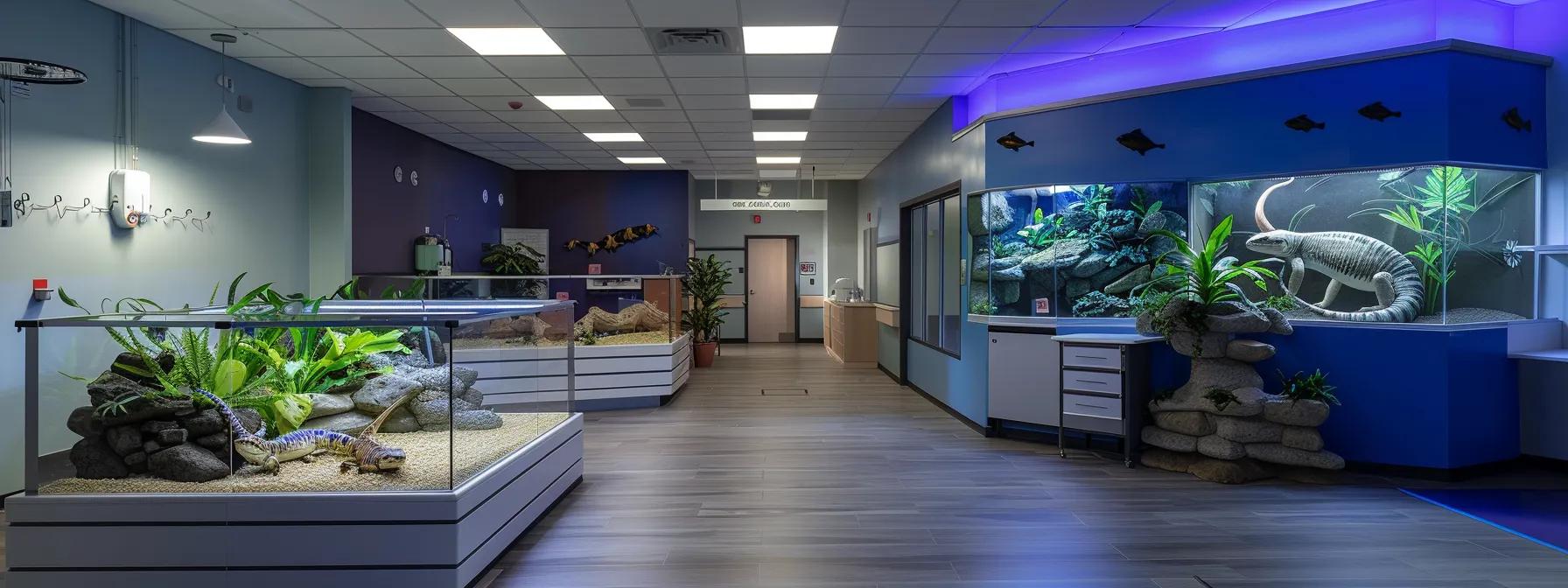
Key indicators of UVB deficiency include:
• Lethargy • Impaired shedding • Reduced appetite • Abnormal posture • Signs of MBD such as soft, deformed, or brittle bones
Early detection is crucial for intervention. Prevent deficiency by ensuring high-quality, properly positioned UVB light that is replaced as scheduled. Regular veterinary check-ups and blood tests for calcium and vitamin D can help identify issues early. Enhancing the enclosure with appropriate basking zones, humidity control, and additional heat sources also promotes optimal UVB absorption.
How to Recognize Symptoms of Metabolic Bone Disease (MBD) in Reptiles?
MBD symptoms include:
• Softening of the jaw • Deformed or swollen limbs • Abnormal postures and reluctance to move • Visible skeletal deformities or compromised mobility in severe cases
Veterinary examinations, including X-rays and blood tests, confirm MBD. Early intervention with improved UVB lighting, dietary calcium, and vitamin D3 supplements is essential for recovery.
How Does Proper UVB Lighting Prevent Vitamin D3 Deficiency?
Proper UVB lighting drives the chemical reaction that produces vitamin D3, crucial for calcium absorption and bone maintenance. Consistent, adequate UVB exposure:
• Promotes healthy bone density • Enhances muscle function • Supports overall metabolism • Encourages natural basking behaviors for thermoregulation
Using the correct bulb, proper placement, and timely replacement creates a stable environment that minimizes nutritional deficiencies.
When Should You Consult a Veterinarian About UVB-Related Health Problems?
If you observe any of the following signs, consult a veterinarian immediately:
• Noticeable behavioral changes (reduced activity or abnormal basking) • Physical changes like swollen joints, soft bones, or irregular postures • Persistent shedding issues or a marked drop in appetite
Regular health check-ups and early intervention through veterinary advice are vital to prevent irreversible skeletal damage.
Which UVB Lighting Products and Accessories Enhance Reptile Health?
Several UVB lighting products and accessories can enhance your reptile’s habitat:
• Complete UVB Lighting Kits: – Integrated systems that combine UVB bulbs, heat sources, reflectors, and timers
• High-Performance Fixtures: – Designed for optimized UVB emission and energy efficiency
• Reflectors: – Amplify and evenly distribute UVB light throughout the basking area
• Programmable Timers: – Ensure a consistent day–night light cycle
• Digital UV Meters: – Essential for monitoring UVI levels and making adjustments
These products work together to create an environment that closely mimics natural sunlight, ensuring proper thermoregulation and vitamin D3 synthesis.
What Are the Best UVB Lighting Fixtures and Kits for Reptiles?
Top UVB kits often include T5 or mercury vapor bulbs from brands like Zoo Med, Exo Terra, and Arcadia. These kits feature secure mounting hardware, protective covers, and easy-to-use timers. Designed for various enclosure sizes, they ensure even light distribution and energy efficiency. Reviews and expert recommendations highlight the importance of choosing kits engineered specifically for reptile care.
How Do Reflectors and Timers Improve UVB Lighting Efficiency?
Reflectors bounce UVB light toward the basking area, maximizing intensity without the need for extra bulbs. Timers simulate natural day–night cycles, regulating exposure to prevent overexposure and reduce energy consumption. These accessories work together to enhance the efficiency and effectiveness of the overall lighting system.
What Are the Latest Innovations in UVB Lighting Technology?
Recent developments in UVB technology include:
• LED UVB Lamps: – Offer customizable spectral outputs and excellent energy efficiency
• Smart Timers and Digital Monitors: – Allow remote adjustments and real-time feedback on UVB and heat levels
• Advanced Reflective Materials: – Improve UVB penetration and distribution in complex enclosures
These innovations contribute to more consistent and durable UVB lighting solutions, ensuring reptiles receive optimal care in their habitats.
What Are Frequently Asked Questions About UVB Lighting for Reptiles?
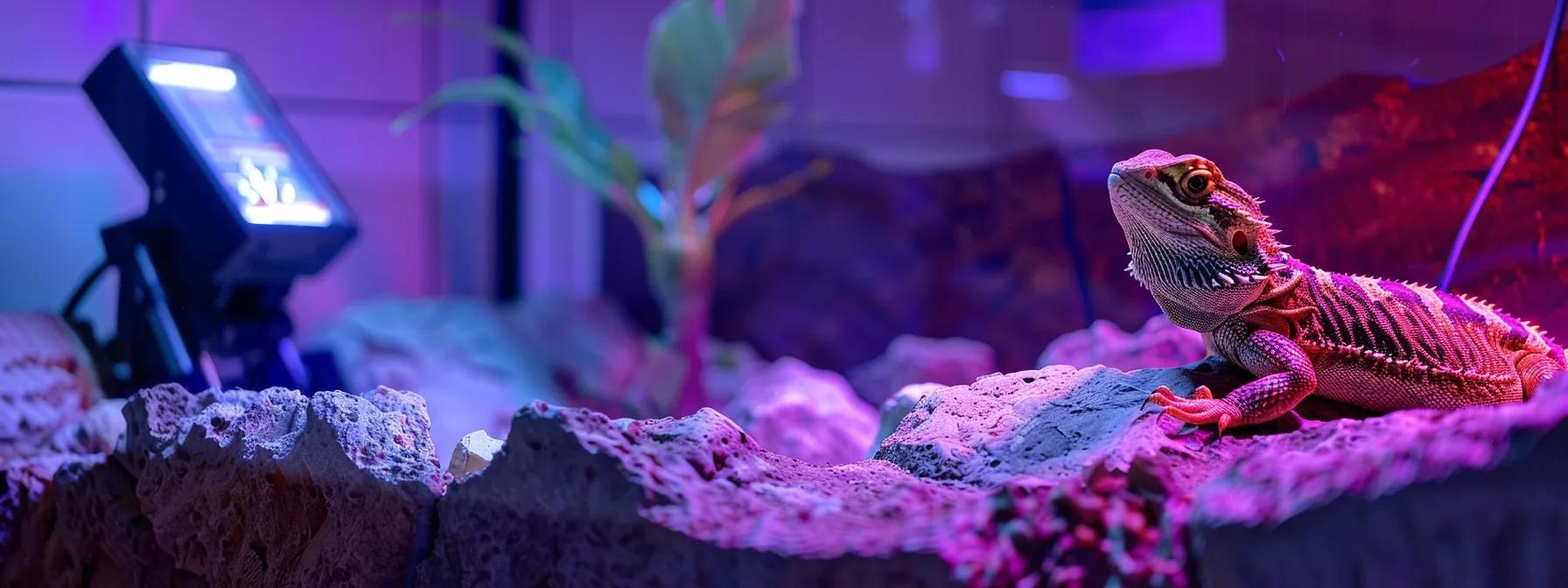
Q: What UVB Bulb Is Best for a Bearded Dragon? A: For bearded dragons, high-intensity T5 fluorescent bulbs are recommended because they provide a UVI between 3 and 7. Positioned 12 to 18 inches above the basking area, they ensure efficient vitamin D3 synthesis and proper thermoregulation. Regular UV meter checks and bulb replacement every 6–12 months are essential.
Q: How Long Should UVB Bulbs Be On for Different Reptile Species? A: Generally, UVB lights should be on for 10 to 12 hours per day to mimic natural daylight. The exact duration may vary with species; desert reptiles may require the upper end of this range, whereas forest species might need slightly less. Timers help maintain consistent photoperiod exposure.
Q: How Do You Measure and Understand UVI Levels in Your Enclosure? A: Use a specialized UV meter to measure the UVI at the basking spot. A UVI range of 3–7 is typically suitable for many diurnal lizards, while nocturnal or forest species may need lower values. Regular measurements (ideally monthly) ensure the bulb’s output remains effective.
Q: How Often Should UVB Bulbs Be Replaced for Optimal Health? A: UVB bulbs should be replaced every 6 to 12 months, as their UVB output declines over time even if they continue to emit visible light. Regular monitoring with a UV meter and adherence to manufacturer guidelines are key.
Q: What Are the Symptoms and Treatments for Metabolic Bone Disease (MBD) in Reptiles? A: MBD symptoms include lethargy, soft or deformed bones, swollen joints, and reduced mobility. Early signs may involve poor appetite and altered posture. Treatment typically requires veterinary intervention, dietary adjustments with added calcium and vitamin D3, and an immediate review of the UVB lighting setup.
Q: Can I Combine Different UVB Bulb Types in a Single Enclosure? A: Yes, combining different UVB bulb types can be beneficial. For instance, a mercury vapor bulb can provide both heat and UVB for a wide basking area while a T5 bulb adds focused high-intensity exposure. This approach ensures all zones receive optimal UVB levels.
Q: What Role Do Reflectors and Timers Play in UVB Lighting for Reptiles? A: Reflectors enhance UVB distribution by redirecting rays towards the basking area, and timers regulate the exposure to mimic natural cycles. Together, they improve both efficiency and consistency of UVB lighting.





